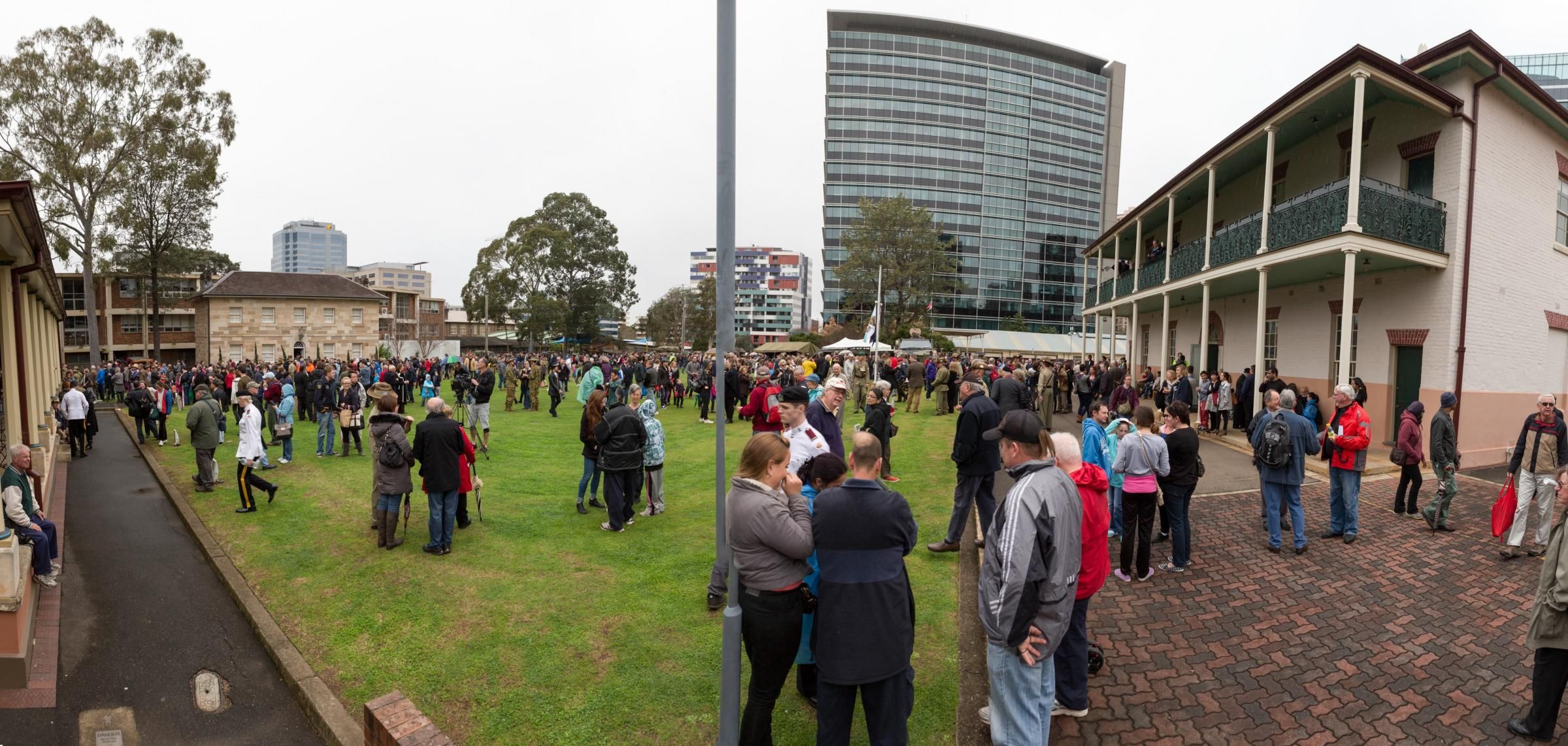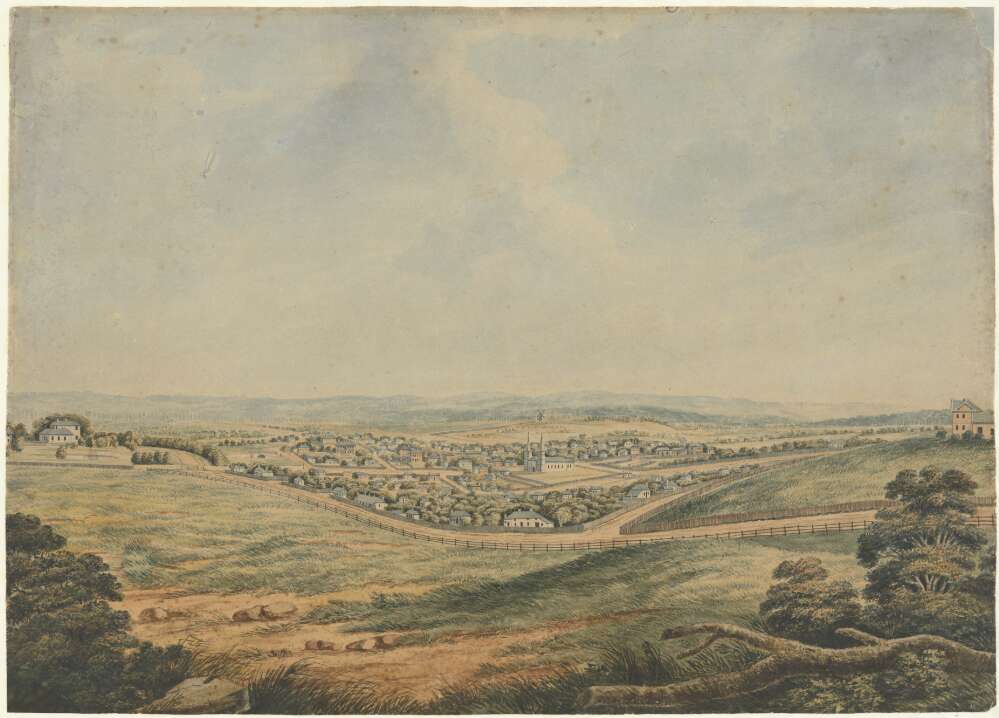
Our banner image: It was the open day in the Barracks after the 2014 street parade, taking the entire history of the Regiment to the public along Macquarie Street, to commemorate the outbreak of WW1. It attracted 7,000 spectators on a dreadful weather day and gained news coverage in England, France and even Russia! The then Governor General, Sir Peter Cosgrove, was the Reviewing Officer and when he visited the Barracks with the crowds after the parade, he went straight to the little Federation cottage which was his childhood home (his father, John Cosgrove, was RSM of the Lancers from 1957 to 1965 and, in those days, what is now the Officers’ Mess was married quarters for ARA staff). At that time, the parade was considered the most successful Parramatta public event in living memory – Ian Hawthorn, Vice President, Royal NSW Lancers Memorial Museum
Statement of Significance
This site has remained in predominantly military useage since 1814 and has undergone only one substantial reorganisation in the 1890s. It appears to be the oldest surviving military barracks on the Australian mainland and so is of great significance as a physical document of Australian history. Bob’s Hall is one of the oldest buildings owned by the Commonwealth Government in Australia.
Bob’s Hall and the barracks are two of a relative handful of buildings surviving from the Macquarie period. Despite numerous alterations, it is still possible to gain from these structures a sens of the atmosphere of a colonial military establishment. Bob’s Hall, which has suffered least from major alteration, is particularly supported by columns on three sides, a comparatively early building from, is a rare survival.
The buildings’ architect, John Watts, can be considered second only to Francis Greenway and perhaps Henry Kitchen as the most significant of Australia’s earliest architects. His surviving works include the Military Hospital at Observatory Hill (1815, now National Trust Centre), Old Government House, Parramatta (1816, incorporating Governor Hunter’s building) and the towers of St. John’s Parramatta (1819).s

Although his designs are often more utilitarian than those of Greenway, Watts is credited with a competent command of design and construction which produced enduring and dignified architecture. His main contribution is undoubtedly the introduction of the verandahed public building to Australia.
Since that time the military history of Parramatta has centred on these buildings. This includes the accommodation in 1820 of the famous Commissioner Bigge, who was sent by the home government to investigate Macquarie’s administration.
Consequently, these buildings can be considered priceless parts of our built heritage and worthy of the most careful treatment in order that their character be preserved and nurtured.
A number of other buildings on the site are of some significance. The Sergeants’ Mess may incorporate an early kitchen and so is important archaeologically. In its present form, it still compliments the Barrack building. Both house and cottage are well built and surprisingly intact examples of Edwardian architecture. The drill hall and wagon shed are substantial weatherboard structures with interesting features such as decorative finials and joinery and terra cotta ridging.
The presence of these buildings considerably strengthens the importance of Lieutenant Watts’ structures by giving them a historical and architectural setting.
The garages, Officers’ Mess and Linden House, provide useful accommodation and are by no means obtrusive. They are, however, of no particular architectural merit.
Together these structures form an important group of military buildings and an excellent example of a 19th century military establishment. Linked visually by its arrangement around the parade ground and entrance drive and by the remnants of earlier fences and planting, it forms a cohesive and valuable identity.
Such a site might be expected to be comparatively rich in archaeological remains. Foundations of buildings of either brick or wood, floor levels, postholes, parts of drainage systems, layers of pathways or roads and spreads of occupation material within structures may be present of which all other traces have now disappeared. Artifacts may be found within any of these features, or as stray finds within the site. This potential in a site dating from so early an occupation and in relatively undisturbed state renders it of great value.
Source: Lancer Barracks Parramatta. Statement of impact of proposed conservation works November 1995. Prepared by J. Amanda Jean, Heritage Architect in association with Gazzard Sheldon Pty Ltd. Parramatta City Council Local Studies Collection.


